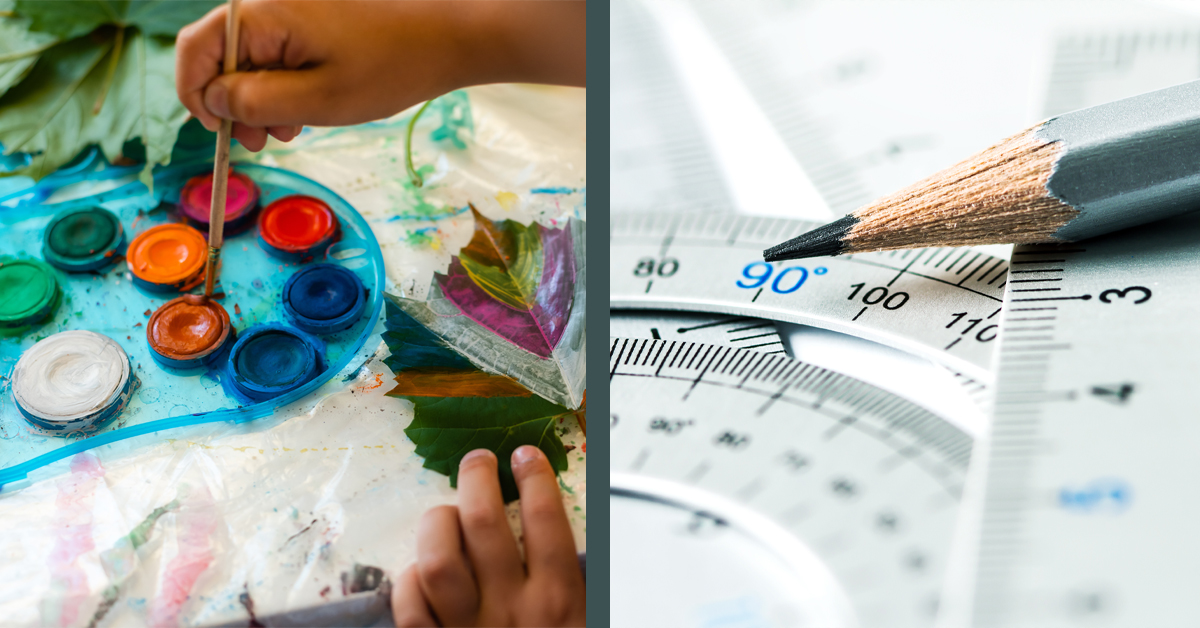
Students are often judged on their skills in math and art at a young age, and unfortunately, that mindset can stick with them through their school years and beyond. They grow up believing they can only be good at one or the other, having either a natural artistic or mathematical ability.
In my work as an art instructor for adult beginners, I’ve heard many first-time students sell themselves short by making comments such as, “So-and-so is the artist in our family, not me.” I’ve also heard similar comments regarding math in my 30 years as a consultant with Demme Learning. The thing is, mathematical concepts and art are actually very closely related.
Over the years, I’ve observed that most students have the potential to be proficient in both math and art if they give themselves a fair shot. In this blog, I’ve highlighted some key parallels between the two disciplines as well as some ways to begin exploring and connecting mathematical and artistic growth in your students.
Why Encourage Growth in Both Math and Art?
Mathematicians and artists alike will tell you that taking the time to intentionally help your student develop their skills in both math and art will strengthen their abilities in other areas, such as:
Creative Strategic Thinking
Practicing art and math cultivates the ability to approach problems from multiple angles and find innovative solutions. Thinking outside of the box when approaching a math problem or deciding how to express a thought or idea in art extends beyond the classroom and into everyday life.
Problem-Solving
Oftentimes, creating a work of art is an exercise in problem-solving. Artists have to determine how to take their inspiration and translate it into their paintings, three-dimensional sculptures, or photographs. In math, students are always learning how to use a concept to find the solution to a problem.
Self-Expression
Mathematics can foster self-expression by providing a structured yet flexible language through which individuals can explore and communicate ideas. Just like art allows for creativity through various mediums, math offers a canvas of symbols, equations, and concepts.
To me, art is the glue that connects many subjects and skills together. Encouraging students to lean into their artistic abilities benefits them in more ways than one. The goal is to help them develop basic skills and learn how to learn. From there, the sky’s the limit. Potential comes in all shapes and sizes.
What is the Connection Between Math Concepts and Art?
If you take a piece of art and put it next to a math worksheet, at first glance you’d probably say, “How could these two disciplines possibly have any connection to each other?” But, if you look beyond the obvious, you’ll notice some key similarities between math and art.
Mathematical Concepts
You may be surprised to learn that artists almost always use at least one mathematical concept while working on a piece of art. In my personal art, I’m continually using art mathematics for considering angles, proportion, linear perspective, balance, grids, quadrants, slope-intercept, and estimating. Other visual mathematics concepts to explore include fractal dimension, the golden ratio (also known as divine proportion or golden proportion), vanishing point, perspective, and symmetry. Other artists with whom I’ve discussed the connection between math and art have also indicated that they use measurement, weight, and even trigonometry as they create.
Math and Art Tools
There is a great deal of overlap when it comes to the tools many artists and math professionals use on a regular basis.
My favorite math/art tool is an angle finder. It can also be used as a straight edge. With a little practice, students can learn how to replicate angles and see perspectives. The cool thing is a student can stand in front of a large structure or even something angled in nature and, by merely holding the angle finder and lining it up with an object (even from miles away), can find the angle and replicate it the mathematical forms in their drawing.
You could even connect it to math by using other geometry tools like a compass or protractor to have students visibly check angles and identify them based on the measurement.
Critical Thinking
Mathematics and art both encourage the development of critical and creative thinking skills that your students can carry with them through life, such as reasoning, analyzing, evaluating, decision-making, and estimating. Learning this perspective through mathematics and art will make a difference, regardless of what your student plans to do post-education.
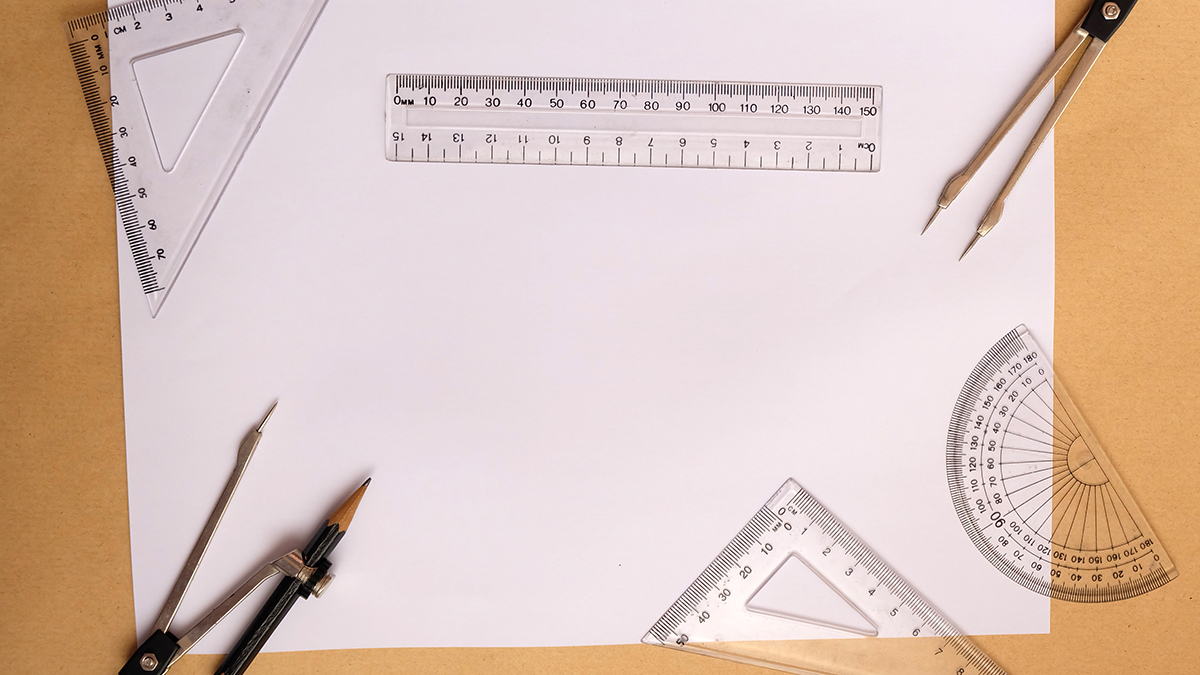
Time to Get Practical: 5 Tips to Promote Mathematics and Art Development
Ok—this is a blog post, not a book. So, let me prioritize and narrow this down to often overlooked developmental tools that I would suggest to include in both mathematics and art. I’m not recommending that you try to implement all of them at once. Pick one idea (or pieces of a couple ideas) to deepen you and your student’s math/art connection.
1) Tension Control, Awareness, and Making Mistakes in Math and Art
The ability to control tension when creating is a skill that is often overlooked. Learning to draw lightly until you get it right evokes a mindset that trial and error is a part of the process.
Capable math students and artists learn to value mistakes. When watching professional artists sketch, you’ll notice them making small, light marks to begin their compositions. They do this to get a feel for what they’re envisioning. By seeing their options upfront, they can better determine where to place their final hard line. Then, they can erase their light lines.
Mathematicians can work through a similar process as they complete multistep math problems. That way, they’ll be able to find an error and erase it without making a mess or having to start over. Learning to print lightly and adjust tension can be key to building confidence and lowering frustration levels in both subjects. And of course, teach your artists and mathematicians to love erasers and celebrate “mistakes” as a normal part of learning math and art.
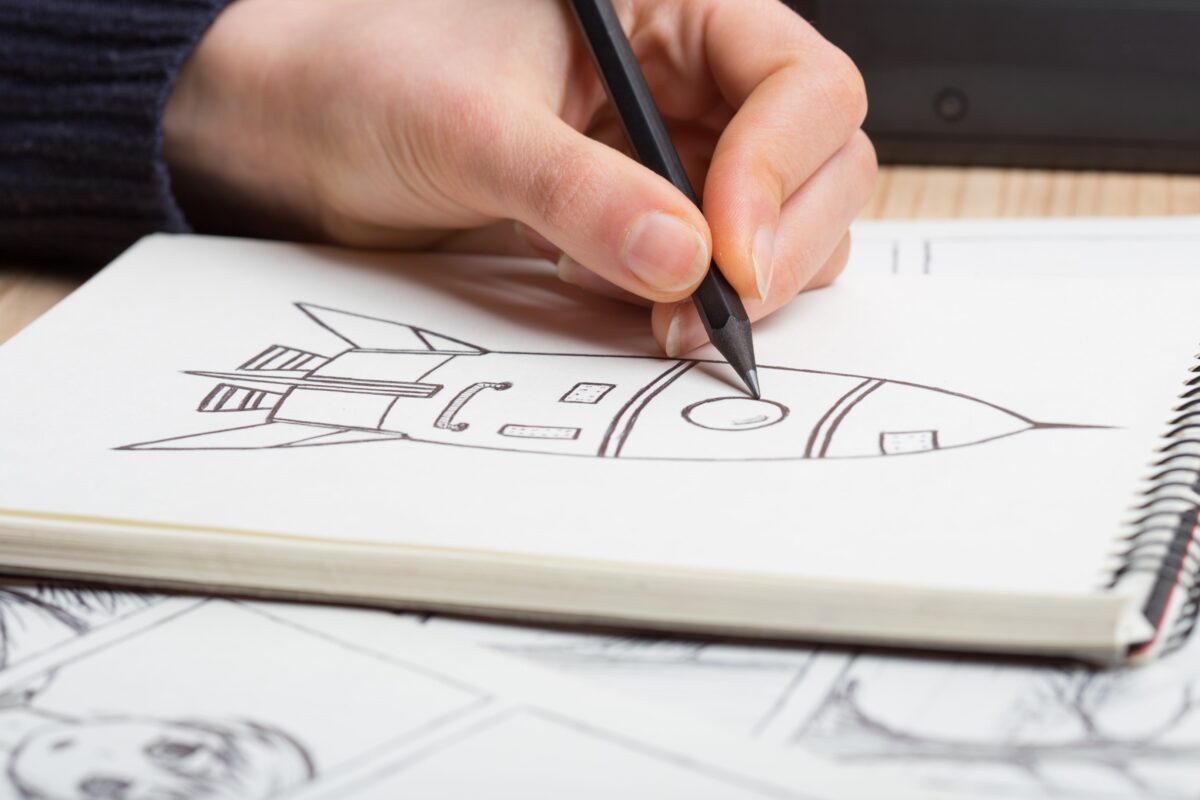
2) Thinking Outside the Box
Going outside the lines can feel risky at times. Ultimately, just getting those worksheets completed with a specific percentage of correct answers won’t be what serves your student best. The real benefits are gained when they learn to grapple with the process. So, while teaching math, provide opportunities for your students to try new approaches.
For example, at least once a week, let them choose a word problem from work they’ve already completed. Ask them to find a different way to say it and arrive at the same answer. This will help them learn to think creatively in math. That way, when they get to more complex math that can be solved multiple ways, they will be more proficient at finding the most effective way.
When it comes to visual arts, there will be more obvious ways to think outside the box. One of my favorite ways is through photography. Next time you and your student are sitting somewhere waiting, hand your student a phone and say, “Let’s snap a few shots.” Don’t just take pictures of people or buildings, though. Rather, encourage them to think beyond “traditional” photography.
Find some texture, interesting colors, and surprising scenes. Play “Who Can Take the Most Unusual Photo in Four Shots.” Then, you can teach them how to crop. How can you make it look better by cropping? You can even print these photos to mat and frame for a gallery wall at home.
Learning to look beyond the standard method and practice a new approach helps students develop openness to expanding their understanding of math concepts and be ready for new ideas. This is definitely a math–art connection.
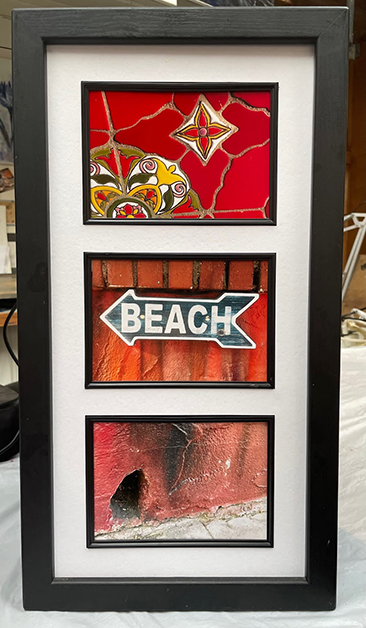
3) Embracing the Mess
I cannot stress enough the value of letting your young artists experience creative discovery. Learning is enhanced with a balance of messy art and formal skill instruction. The same goes with mathematical concepts.
When I’m trying to learn mathematical ideas, my brain really likes to be free to figure it out on a messy page. Having to worry about neatness can sometimes make it harder to focus on an idea. While some thrive with order, others must undergo a messy journey to understanding. Be sure to work together with your kids to find the right balance and keep them interested.
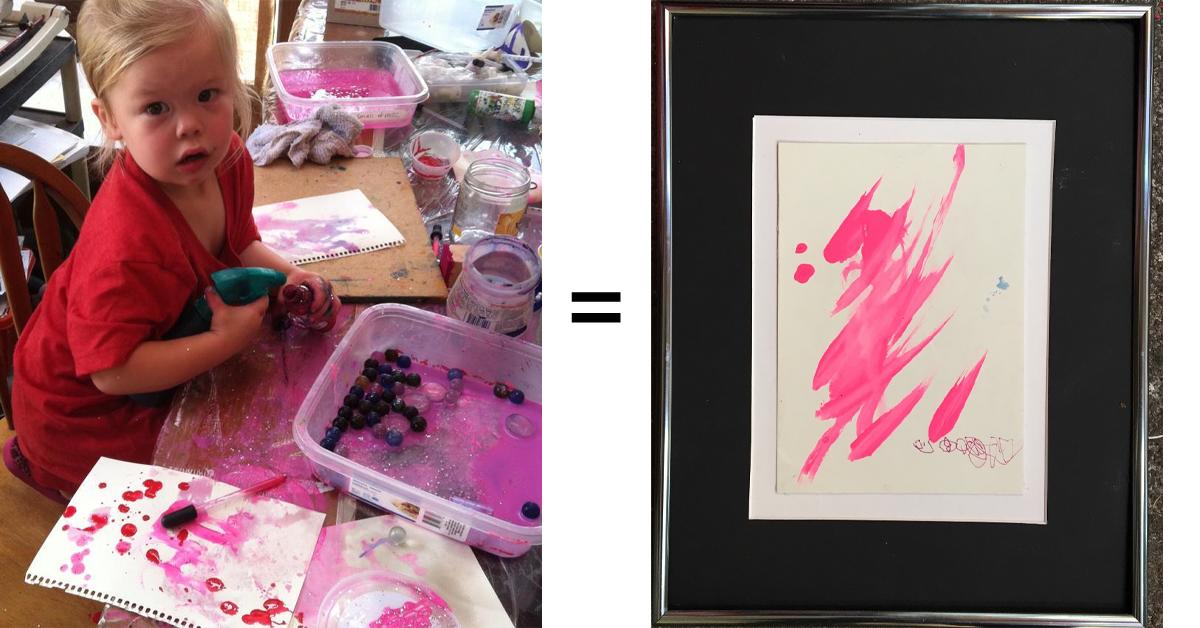
4) Limiting Time for Intense Instruction
When I teach children’s classes, I typically figure in 10–15 minutes of formal instruction mixed in with free play. I’ve found that art students—both adults and children—can only integrate so much new information. They start out doing great, then suddenly trash their work or get frustrated because they shut down neurologically and lose interest. This is often true during math instruction as well.
I encourage you to be aware of your students’ limits and build a habit of honoring when it’s time to take some space away from the work. Try shorter sessions when learning a new idea or technique, then walk away and reapproach it later with fresh eyes.
For example, I’ve exercised this moderation with my grandson. When he was five, I purchased a set of Hands 4 Building for us to work on together. My number one goal was to teach him the value of knowing when to take a break. Now at seven, he’s able to work somewhat independently using age-appropriate blueprints and a miter saw. He’s really proficient at knowing when he should take a break and come back refreshed. His finished pieces are impressive.
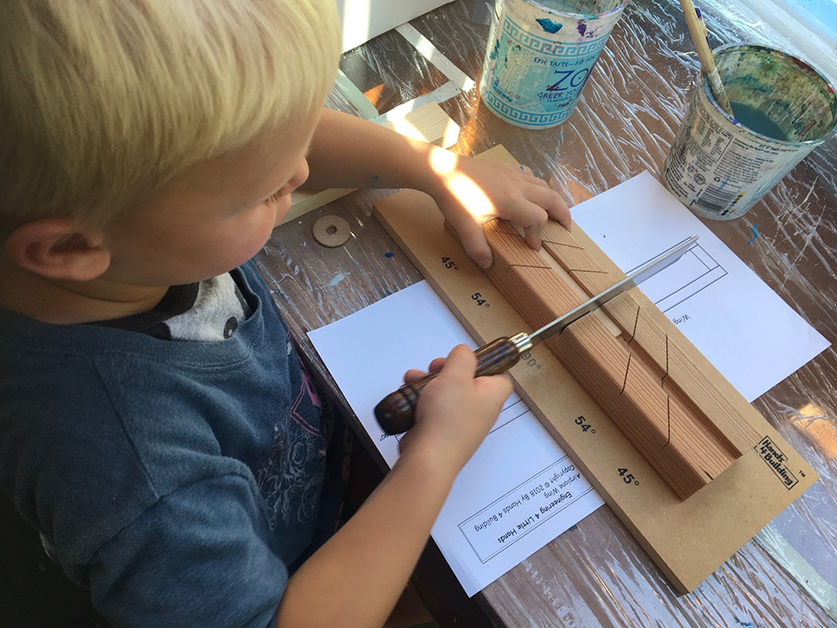
5) Making Intentional Connections
One of the best ways to show your kids the commonalities between mathematics and art is simply to make intentional connections while you teach. Here are three easy ways to go about this.
Nature Journaling
Nature journal involves creating a journal with a simple format to observe the physical world and document what they see in various ways. Encourage them to observe and note the flora and fauna in detail. This activity has the added bonus of prompting inspiration for future artwork. My favorite resource for this technique is John Muir Laws’ website.

Puzzles
Working through and developing a love for puzzles together is another way to connect mathematics and art. Both math and art are all about puzzles. Find one that features a topic of interest for your student to improve engagement.
Vocabulary
Intentionally using mathematical terms such as arch, parallel, perpendicular, axis, etc., when working on art will set young artists up for future success when a concept shows up in their upper-level math studies.
I always say, “math and art are like fraternal twins. In some ways they don’t look alike and in other ways they do. But they make a great team.” The magic happens when you make this connection clear to your student, regardless of whether or not they’ve been deemed the “artist/mathematician of the family.” There’s a mathematician and an artist in all of us just waiting for their chance to shine.
Interested in learning more about supporting your student in both math and art? Watch this episode of The Demme Learning Show!
This post was updated on October 28, 2022.




It would be great to hear art curriculum suggestions for 5-6 th grades.
Sally,
I would need more information regarding where your students are in regards to art as the answer would be very individualized. swachter@demmelearning.com
This article is spot on. I am a self-taught artist as they say and have been an oil painter for over 60 years, I was very good at math in school even to correcting a teacher’s mistakes in Algebra, one time. I have taught hundreds of people to draw from 7 – 42 years of age and helped a few paint. I was a technical illustrator for 35 years. I agree with everything you say. I never tell a student his drawing is wrong or ugly. I focus on their potential even young children can show perception of how they observe thier world. I begin working with that and help them to better translate what they see. EXcellent article!
Bob, Thank you so much for taking the time to comment. You no doubt made difference in the lives of the people you encouraged in both art and math. I am encouraged by your insight.